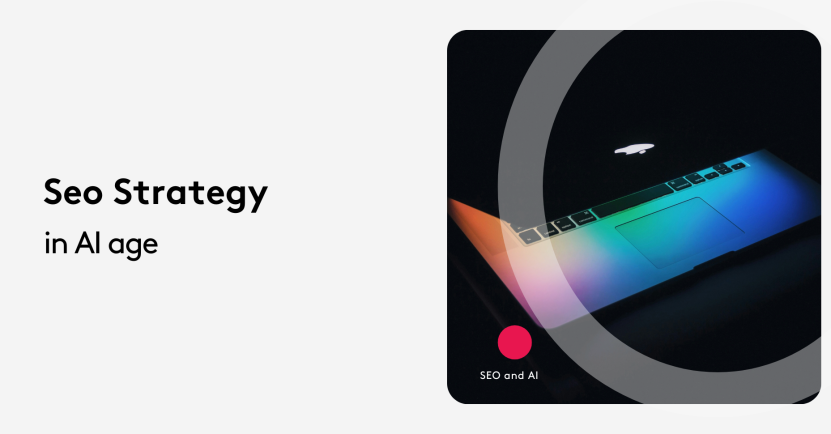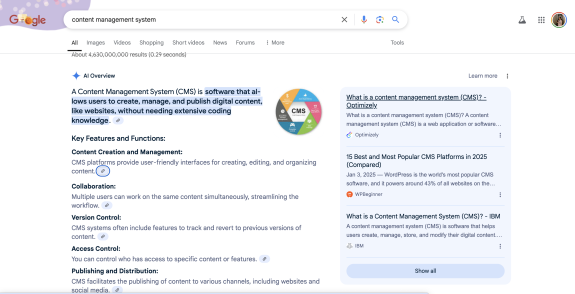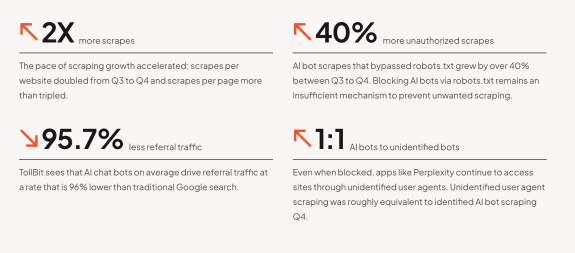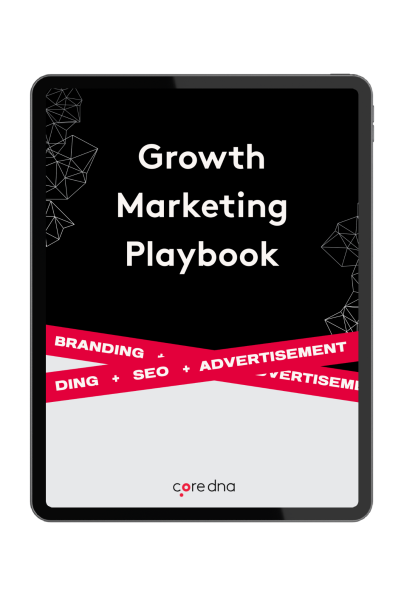Is SEO Dead? How to Update your Seo Strategy to 2025

Is SEO dead? The question on every marketers' mind. The short answer, there is no short answer. SEO has long been a well crafted art that helped businesses rank in google for their target keywords.
A solid SEO strategy allowed brands to predict how well their content would perform. Even when Google introduced new algorithms, we could still count on a mix of keyword research, content structure, and website optimization to deliver results.
LLMs and AI search are shaking things up and to be honest, in a good way by giving exact answers to the questions people are searching. AI answers are focused on relevance, user intent, and overall user experience.
This new approach to search and search results is putting pressure on business and marketing teams. But adapting to this new landscape is easier than you might think.
Let’s explore how to incorporate AI into your SEO strategy and how to use social media as a traffic source. Is Seo dead? not just yet, google still holds 89.62% of the global search market share and AI needs content to be able to offer answers.
Don't disappear, let's adapt and grow.
Key takeaways
- SEO isn’t “dead,” but it’s evolved beyond simple keyword stuffing and link-building strategies.
- User experience and content quality are now key drivers of search rankings.
- Mobile-first, voice search, and technical SEO matter more than ever to stay visible in changing SERP environments.
- Google’s algorithm updates reward authenticity, expertise, and relevance over outdated “quick fix” techniques.
- Effective SEO today is about creating valuable, targeted content that genuinely solves user needs.
On this page:
First, Let's look at the impact of AI on SEO
LLMs like Chatgpt, Perplexity and Claude are pushing Google rethink how content is being presented to the end user and how rankings works. You probably already noticed that while your sites impressions are skyrocketing, while traffic is down. This is the new normal.
Now, people go to websites for a REASON, all those window shopping blog skimmers stay on Google overview. It doesn't mean you need stop SEO, it means you need to make it worth it for them to click. Think experience, immediate answer to their request and valuable info. And Yes, you want to have our brands as a citation (it beats being invisible!)
LLMs now prioritize user intent, context, and content quality over simple keyword matching. This means that creating valuable, relevant content is more critical than ever.
As you can see below, my search for content management system was answered by a summarized AI overview that highlights the most important points to know. It's not about one website's answer, it's an analysis of several pages to give a holistic answer.

However, AI's influence isn't limited to search algorithms. AI chatbots are increasingly retrieving information directly from websites to provide users with immediate answers, often without directing them to the original source.
AI chatbots drive 95.7% less referral traffic compared to traditional Google search, indicating a significant shift in how users access information which will lead to a big shift in traffic for businesses. The question now is how to adapt?
Adapting to the New SEO Landscape
SEO today is brand-first and yield-focused. To succeed this new era, content creators should:
- Focus on High-Quality Content: Produce informative, engaging, and shareable content that meets the needs of your target audience.
- Optimize for User Intent: Understand the questions and problems your audience has, and tailor your content to provide clear, concise answers.
- Leverage Social Media: Promote your content across relevant social platforms to increase engagement and signal its value to search engines.
- Stay Informed About AI Developments: Keep abreast of how AI technologies are evolving and influencing content discovery and consumption.
By embracing these seo strategies, you can maintain and even enhance your content's visibility in an increasingly complex digital ecosystem.

So, How is AI Redefining Customer Acquisition and SEO Visibility
AI has shifted the way brands show up and get discovered. Brands used to focus on climbing search rankings through SEO and spending big on paid search but AI is now becoming the interface through which users interact with content and discover products.
Instead of scrolling through pages of search results, users ask AI tools like ChatGPT, Perplexity, or Google’s AI Overviews direct questions and receive summarized answers with a handful of suggested links. If your brand isn’t included in these AI-generated summaries, you’re invisible, no matter how strong your old-school SEO game was.
Emerging tools like Profound are already helping brands understand how they show up in AI search results and which factors influence AI recommendations. Research from Search Engine Land seem to indicate that less than half of the links that AI answers cite come from Google’s top 10 search results.
That means traditional SEO isn’t enough, brands now need to focus on becoming part of AI-curated answers.
Customer acquisition is also being automated at lightning speed. Platforms like Smarly are automating ad creation using existing content libraries, running hundreds of A/B tests to determine the best-performing copy, visuals, and formats.
In influencer marketing, brands are already buying the rights to creators' likenesses and using AI to generate synthetic ads on demand, scaling outreach and engagement without manual effort.
What this means for marketers:
- Optimize for AI visibility
- Build a strong, clear brand narrative that can be easily summarized and recommended by AI assistants.
- Embrace AI-powered ad creation and influencer campaigns that leverage automated testing and personalization at scale.
- Understand that the future of customer acquisition won’t happen on landing pages. It’ll happen in AI chat responses and autonomous agents acting on user prompts.
What AI Scraping Means for Your Content
If you’re a content creator or marketer, there’s a big shift happening that you need to be aware of.
According to TollBit’s latest report, AI bots are scraping content from websites at record levels but they’re not sending visitors back to your site the way traditional search engines like Google do.
Even more surprising? Between Q3 and Q4 2024, AI scraping activity more than doubled. That means bots are out there constantly gathering your content to power AI search results, chatbots, and summaries and most users get their answers without ever clicking through to your website.
Here’s the tricky part: blocking these bots with traditional tools like a robots.txt file isn’t working anymore. The report shows that many AI crawlers ignore these rules or use hidden identities to keep scraping your content.
What does this mean for you?
You won’t always get as much traffic from AI-generated answers.
AI tools like ChatGPT and Perplexity are pulling content, but users often stay on those platforms without clicking through. So while your content might be powering answers, you might not see visits in return.
Monetization needs to evolve.
Relying on ad impressions or subscriptions from direct visits won’t cut it if traffic drops. Licensing content to AI platforms is becoming a real consideration for publishers and content businesses.
Transparency is key.
Most content creators don’t even know how often their content is being scraped. TollBit recommends using analytics tools to track AI bot activity on your site — and it's free to set up.
Tools and Techniques to Adapt your SEO strategy
Navigating the new world of AI Search Engine Optimization (SEO) requires a strategic approach supported with tools and techniques that help you find new acquisition opportunities.
Below are some tips and tools we use to enhance our SEO efforts, along with insights into optimizing for AI-driven search and optimize for natural language processing (NLP).
1. Embrace AI-Powered SEO Tools
Integrating AI-driven tools into your SEO strategy can significantly improve efficiency and effectiveness. Consider the following:
- Content Optimization: AI tools like Clearscope and MarketMuse analyze top-performing content to provide recommendations on keyword usage, content structure, and readability, ensuring your content aligns with user intent.
Because we feel that knowledge should be shared, you can also find below our favorite prompt for content creation outline for your blog articles. This can be used with any of your favorite Generative AI chat.
"Help me make an outline for my article. Analyze the top 10 outlines for articles that rank on Google for the keyword “ENTER KEYWORD” - Take the common sections they all have, unique sections that some have, and new sections that none have to make the outline. Note in each heading/section which of the 3 it is (common, new, unique). Make sure the structure of the article follows a logical flow, and don’t just simply list out all the common, then unique, and new sections in a row. Mix these different types of headlines in the article logically and note which one each heading is. The keyword I am trying to rank for is “ENTER KEYWORD”
- Technical SEO Audits: Platforms such as Lumar and Screaming Frog utilize AI to conduct comprehensive site audits, identifying issues like broken links, duplicate content, and crawl errors that could hinder your site's performance.
2. Optimize for AI-Driven Search Engines
As AI becomes integral to search algorithms, aligning your content with AI preferences is crucial:
- Structured Data Implementation: Utilize schema markup to provide search engines with explicit information about your content, enhancing visibility in rich snippets and AI-generated responses.
- Focus on User Intent: Develop content that comprehensively addresses user queries, considering the context and nuances of search intent to improve relevance.
3. Leverage Natural Language Processing (NLP)
NLP enables search engines to understand context and semantics, influencing how content is ranked:
- Conversational Keywords: Incorporate natural, conversational phrases that users are likely to employ, especially with the rise of voice search.
- Entity Recognition: Ensure your content clearly identifies and elaborates on key entities (people, places, concepts) to align with AI's semantic understanding.
4. Prioritize High-Quality, Authoritative Content
AI algorithms favor content that demonstrates expertise and trustworthiness:
- In-Depth Analysis: Provide comprehensive insights and original research to establish authority in your niche.
- E-A-T Principles: Emphasize Expertise, Authoritativeness, and Trustworthiness in your content to meet AI evaluation criteria.
5. Monitor AI Search Trends
Stay informed about advancements in AI search technologies to adapt your strategies accordingly:
- Continuous Learning: Engage with industry publications and forums to keep abreast of AI developments impacting SEO.
- Experimentation: Test and analyze the effectiveness of AI tools and techniques in your SEO efforts, adjusting strategies based on performance data.
By integrating these strategies and tools, you can effectively manage SEO in the AI age, ensuring your content remains visible and relevant in an ever-evolving digital landscape.
How Social Media Became Crucial for SEO Strategy
Social media platforms have become integral to SEO strategies. Search engines consider social signals—such as likes, shares, and comments—as indicators of content relevance and quality.
Moreover, social media platforms themselves serve as search engines, with users seeking information directly within these networks. Optimizing your content for social media can enhance visibility and engagement, indirectly boosting your SEO performance.
In the evolving landscape of digital marketing, Social Media SEO has become a pivotal strategy for enhancing online visibility. Each social media platform offers unique opportunities to optimize content for searchability.
Below, we explore current trends and provide actionable tips for various platforms, with a focus on Instagram's shift from hashtags to keyword-rich captions.
Instagram: Emphasizing Captions Over Hashtags
Instagram's recently announced that its algorithm has evolved to prioritize the content of captions over traditional hashtag usage for content discovery. To optimize your posts:
- Incorporate Relevant Keywords: Use specific keywords in your captions that align with your content and target audience's search behavior. This enhances the likelihood of appearing in relevant social search results.
- Optimize Your Profile: Ensure your bio includes pertinent keywords related to your niche or industry, as this aids in discoverability.
Facebook: Leveraging Engagement and Keywords
Facebook's search functionality considers user engagement and keyword relevance. To improve your content's visibility:
- Engage Consistently: Interact with your audience through comments, shares, and reactions to boost your content's prominence in search results.
- Use Descriptive Captions: Craft captions with relevant keywords to align with common search queries, enhancing discoverability.
YouTube: Optimizing for Searchability
As the world's second biggest search engine, YouTube requires specific SEO strategies:
- Keyword-Rich Titles and Descriptions: Incorporate relevant keywords into your video titles and descriptions to improve search rankings. Socialinsider
- Utilize Tags Effectively: Add pertinent tags to your videos to assist YouTube's algorithm in categorizing your content accurately.
LinkedIn: Enhancing Professional Visibility
LinkedIn's search algorithm favors profiles and content rich in relevant keywords:
- Optimize Your Profile: Include industry-specific keywords in your headline, summary, and experience sections to increase visibility in search results.
- Publish Keyword-Focused Articles: Share articles and posts that incorporate terms your target audience is likely to search for, boosting your content's reach.
Pinterest: Focusing on Descriptive Content
Pinterest operates as a visual search engine, making descriptive content crucial:
- Detailed Descriptions: Write comprehensive descriptions for your pins, including relevant keywords to enhance searchability.
- Organize Boards Strategically: Create boards with keyword-rich titles and descriptions to improve discoverability.
TikTok: Leveraging Keywords and Trends
TikTok's algorithm emphasizes content relevance and user engagement, making strategic SEO practices essential:
- Incorporate Relevant Keywords: Identify keywords your target audience is searching for and naturally integrate them into your video captions, on-screen text, and spoken content. This alignment enhances your content's visibility in search results.
- Utilize Hashtags Strategically: Employ a mix of trending and niche-specific hashtags to categorize your content effectively, increasing the likelihood of reaching interested viewers.
- Engage with Trends: Participate in trending challenges and use popular sounds to boost your content's discoverability, as TikTok's algorithm often favors trend-aligned videos.
By customizing your SEO strategies to align with the unique functionalities and evolving trends of each social media platform, you can significantly enhance your content's visibility and engagement across these diverse digital landscapes.
For a visual guide on optimizing your TikTok presence, consider watching the following tutorial:
By tailoring your SEO strategies to the specific functionalities and trends of each social media platform, you can significantly enhance your content's visibility and engagement.
How AI Challenges SEO
As AI reshapes how users search, consume, and trust content, SEO faces new challenges that go beyond keywords and backlinks. The shift toward AI-generated answers, zero-click searches, and conversational interfaces is forcing marketers to rethink their strategies.
In 2025 and beyond, building real brand authority will separate those who thrive from those who get left behind.
The New Challenges:
- Zero-click search dominance: Users are increasingly getting answers directly from AI summaries or featured snippets, without clicking through to websites. This means even if your content powers those answers, you may not get the traffic unless your brand is recognized and sought out directly.
- AI "overviews": Search engines and chatbots are using LLMs to summarize content based on patterns, not just rankings. As shared in SEO communities, this has created an environment where AI often bypasses nuanced, original content in favor of regurgitated summaries making it harder for genuinely helpful content to stand out unless backed by authority signals.
- No shortcuts with low-quality tactics: Link farms, keyword stuffing, and mass-produced "thin" content are being filtered out more effectively than ever. Multiple SEO pros are moving away from spray-and-pray guest posts and focusing on high-authority mentions and top-tier publications.
The Role of Brand Building in Modern SEO
Here’s the truth: if your brand has authority, trust signals, and a recognizable voice, you will still win in AI search and organic rankings. Why? Because AI models and Google’s evolving algorithms are increasingly favoring entities (brands, experts, and trusted sources) over generic content.
How to Build a Strong Brand to Support GEO (Generative engine optimization)
It's time to blend some old school PR and marketing with new age marketing. Get out there from podcast to influencer collaboration to internal ambassadors. Building your brand means being visible outside of the digital search.
- Branded search volume matters: Google and AI search platforms track how many people search for your brand name. The more people look for you, the more trustworthy and relevant you appear.
- Get cited in authoritative sources: Mentions on trusted platforms (Forbes, Entrepreneur, niche industry leaders) act as digital endorsements. The best SEOs in the community are doubling down on reporter outreach and PR for this reason.
- Consistent, authentic content: Focus on specific, helpful content that builds long-term relationships with readers and positions you as the go-to source for your niche.
- Create community touchpoints: Brands that have direct audience relationship via newsletters, podcasts, YouTube, or loyal social media followings will be less dependent on volatile search traffic. The more users engage with you directly, the more those signals support your authority.
Expanding Your GEO & SEO Strategy for 2025
As the zero-click world becomes a reality, the mindset needs to shift from ranking on Google’s first page to being present wherever and however people are searching.
As you adapt to new discovery channels like visual and voice search, you will start optimizing content for AI-generated summaries, and rethinking how you measure success.
So let's break down exactly how to optimize for these emerging opportunities, how to turn zero-click results into brand equity, and how to future-proof your content and tracking methods. Let’s dive in.
Visual and Voice Search Optimization
Voice and image search are becoming the standard way to search for many. It's a way to find what they need quickly and intuitively. If brands want to stay visible, they need to adapt to how users are searching right now.
Why Visual Search Matters
Platforms like Google Lens and Pinterest Lens, lets users snap a photo or upload an image to find products, recipes, or information. It’s becoming especially popular for shopping and discovery, with more users preferring images over typing in text.
How to optimize for visual search:
- Use high-quality, relevant images that represent your products or services clearly.
- Add descriptive, keyword-rich alt text so search engines can understand and rank your images.
- Implement schema markup (structured data) for products and articles this helps search engines show detailed information right in search results.
- If you run an e-commerce site, make sure each product image is tagged with product schema so users can find details like pricing and availability without leaving the search result.
A quick video to show you how visual search works.
Why Voice Search Can’t Be Ignored
I mean we are becoming lazy, even typing feels like a chore. Voice searches tend to be more conversational and question-based: think “Where’s the best coffee shop near me?” instead of just typing “best coffee shop.”
Here are a few tips to optimize for voice search:
- Create FAQ sections on key pages to answer common questions in a simple, conversational way.
- Use natural language and write how people speak.
- Structure content with clear headings and short, direct answers.
- Focus on local SEO, since voice searches often include phrases like “near me.” This means keeping your Google My Business profile up-to-date and including city or neighborhood names in your content.
Zero-Click Searches
In 2025, more searches are ending without a single click. AI Overviews and featured snippets are offering users the answers right on the search results page. But Zero-click doesn’t have to mean zero opportunity. It means the focus shifts from driving immediate traffic to building brand recognition and trust right in the search results.
How to show up in zero-click searches:
- Aim for featured snippets. Write clear, direct answers to common questions. Use bullet points, lists, or short paragraphs that make it easy for Google to pull your content into answer boxes.
- Get into knowledge panels. Ensure your brand is listed in trusted databases like Wikidata and maintain consistent business profiles across directories.
- Write with authority. Your content should be comprehensive, well-sourced, and positioned as an expert resource this increases your chances of being cited in AI summaries and answer boxes.
Measuring success without the click:
- Branded search volume: If more people search for your brand after seeing you in a zero-click result, you’re doing it right.
- Direct traffic: Users might go straight to your site later keep an eye on that.
- Engagement signals: Social shares, saves, and bookmarks show that people value your content, even if they didn’t click right away.
Content Refresh Strategies for the AI Era: Keep Your Content Working for You
In 2025’s fast-moving SEO landscape, old or outdated content doesn’t just sit quietly, it drags your rankings down. Search engines (and AI tools) now prioritize fresh, up-to-date content that matches current search intent. That’s why refreshing your content isn’t optional anymore.
How to spot content that needs an update:
- Check Google Search Console regularly for pages that are dropping in impressions, clicks, or average position.
- Look at content that isn’t showing up in AI summaries or knowledge panels, that’s a sign you’re not being recognized as a current authority.
- Identify articles that are outdated, missing newer data, or no longer align with what your audience is searching for.
Simple ways to refresh content and boost rankings:
- Update your stats and examples. Replace outdated data with current insights.
- Add semantic keywords. Use tools like Surfer SEO or Semrush to find related terms and questions your audience is asking now.
- Improve formatting. Break up large blocks of text with clear headings, subheadings, and bullet points to make your content easy to scan.
- Answer common questions. Add concise answers and FAQs that are voice-search and AI-friendly.
- Enhance visuals. Update old images, embed fresh videos, or add infographics to boost engagement.
SEO Metrics That Matter in 2025
As SEO morphs into GEO and other AI search optimization terms, metrics like organic traffic and click-through rates are becoming less reliable indicators of success. In 2025, brands must focus on new metrics that can give them more insights into their performance in this shifting world.
These include:
| Metric | Description |
|---|---|
| Branded Search Volume Growth | Indicates growing brand awareness and trust, even if direct traffic doesn’t increase proportionally. |
| AI Search Mentions | Tracks brand visibility in AI-generated results or overviews. |
| Direct Traffic Trends | Monitors users visiting sites directly after seeing brand mentions, signaling trust and recognition. |
| Engagement Signals | Includes time on page, bounce rate, shares, and saves, reflecting content quality and user satisfaction. |
| Brand Sentiment and Social Media Mentions | Positive sentiment and increased engagement correlate with improved brand perception and SEO performance. |
Branded search volume growth shows users are recognizing and seeking out the brand directly, while AI search mentions measure visibility in zero-click scenarios.
Direct traffic trends indicate trust, with users visiting sites without additional clicks, and engagement signals like time on page and shares reflect content value. Monitoring brand sentiment on social media provides real-time feedback on perception.
The SEO Game Has Changed
The rise of AI, zero-click searches, and platform-first discovery doesn’t mean content creators and marketers are out of options. It means we need to think smarter.
Focus on building a brand people (and AI) trust, create content that’s helpful and specific, and optimize not just for rankings, but for visibility in conversations, summaries, and recommendations.
The brands that adapt fastest will stay in the spotlight not just in search results, but everywhere their audience is asking questions.





